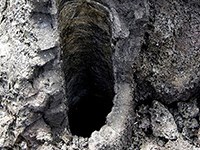Last updated: April 18, 2023
Article
Lava Tree Mold Fossils
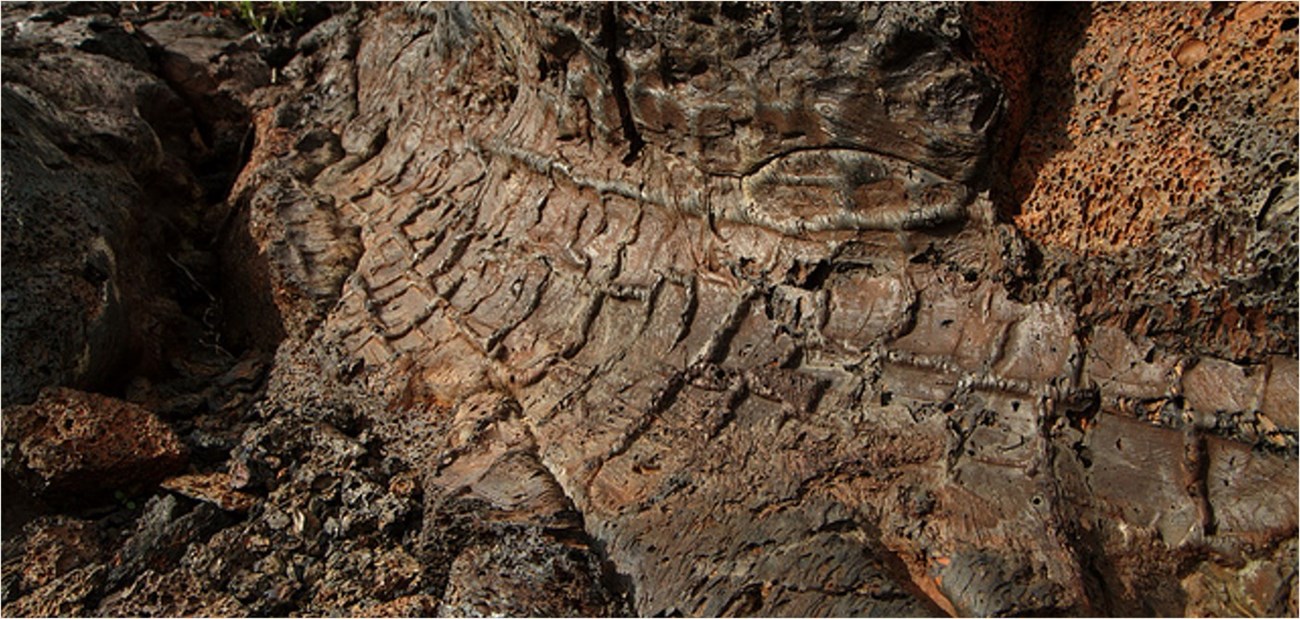
USGS photo.
Introduction
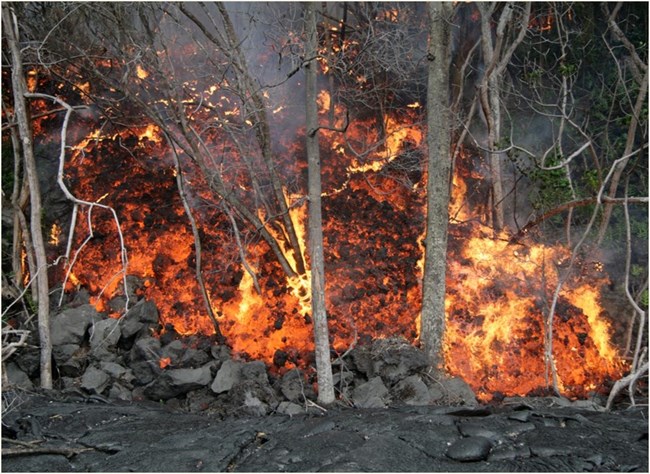
Tree mold impressions are trace fossils that develop within lava flows. They form when trees engulfed by molten lava are not immediately consumed by the heat. When lava contacts the trees, their moisture content is released as steam, accelerating cooling and allowing time for the tree to form an impression in the lava. Surface details such as bark patterns are sometimes preserved, even after the tree has decayed or succumbed to the lava’s heat.
There are two basic types of tree molds, true tree molds and “lava trees”. While true tree molds are impressions or hollow molds within the lava flow, “lava trees” are vertical features rising above the surface of the flow. Lava trees are usually formed by accumulation of airborne lava spatter onto a standing tree during eruption. Spatter partially buries the tree, leaving behind a thin conical shell of lava with the impression of a tree trunk on the interior surface. Lava trees can also form when a lava flow engulfs a standing tree and forms a shell when the flow drains away.
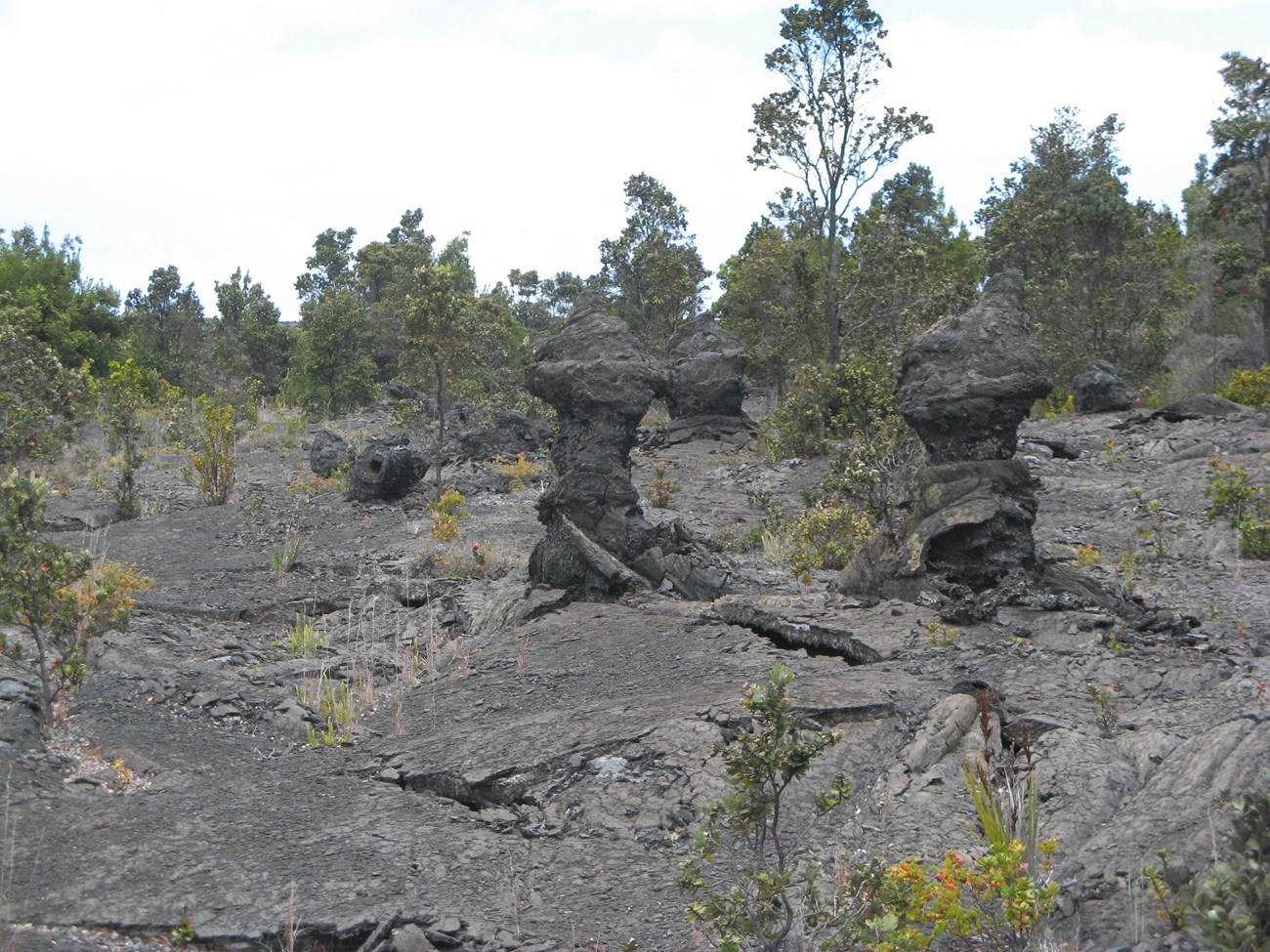
NPS photo.
NPS Paleontological Resource Inventory
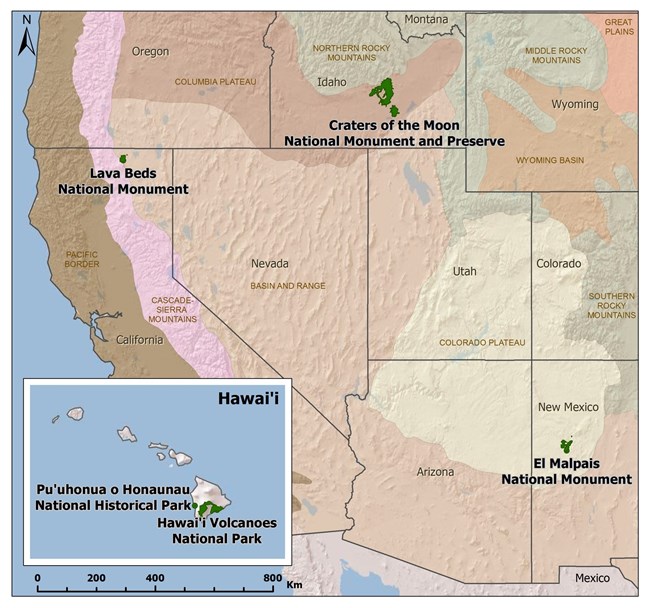
An inventory of tree molds documented within U.S. National Park Service areas conducted in 2012, identified their occurrence in five parks.
-
Craters of the Moon National Monument & Preserve, Idaho
-
El Malpais National Monument, New Mexico
-
Hawaiʻi Volcanoes National Park, Hawaiʻi
-
Lava Beds National Monument, California
-
Puʻuhonua O Hōnaunau National Historical Park, Hawaiʻi
Scientific Value
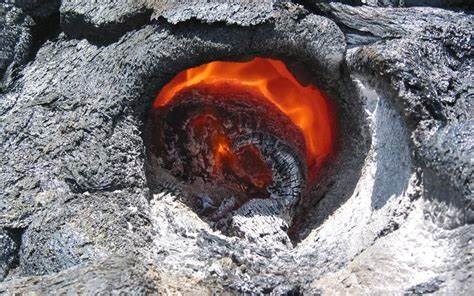
USGS photo.
Lava tree molds preserved in parks and other proected areas provide opportunities for public education and scientific study of these rare and valuable paleontological resources. Charcoal from incinerated trees can often be dated which helps us map and understand the sequence of eruptions around a volcano. Tree molds can indicate the type of vegetation growing prior to eruption, which is useful in defining the habitat and climate at the time of the lava flow. Direction, speed, and thickness of a flow can even be established by looking at the structure of lava in and around these tree molds.
Source
Santucci, V.L., L.C. Walkup, T. Casadevall, J.C. Wood, and T. Conners, 2012. An inventory of National Park Service fossil tree molds preserved within lava flows. VolcandPark Conference - First International Congress on Management and Awareness in Protected Volcanic Landscapes, Olot, Spain. [Adapted from the Abstract / Conference Presentation]
Featured Webpage and Photo Album
Parks with Tree Mold Fossils
-
Craters of the Moon National Monument (CRMO), Idaho—[CRMO Geodiversity Atlas] [CRMO Park Home] [CRMO npshistory.com]
-
El Malpais National Monument (ELMA), New Mexico—[ELMA Geodiversity Atlas] [ELMA Park Home] [ELMA npshistory.com]
-
Hawai’i Volcanoes National Park (HAVO), Hawai’i—[HAVO Geodiversity Atlas] [HAVO Park Home] [HAVO npshistory.com]
-
Lava Beds National Monument (LABE), California—[LABE Geodiversity Atlas] [LABE Park Home] [LABE npshistory.com]
-
Pu'uhonau o Honaunau National Historic Park (PUHO), Hawai'i—[PUHO Geodiversity Atlas] [PUHO Park Home] [PUHO npshistory.com]

